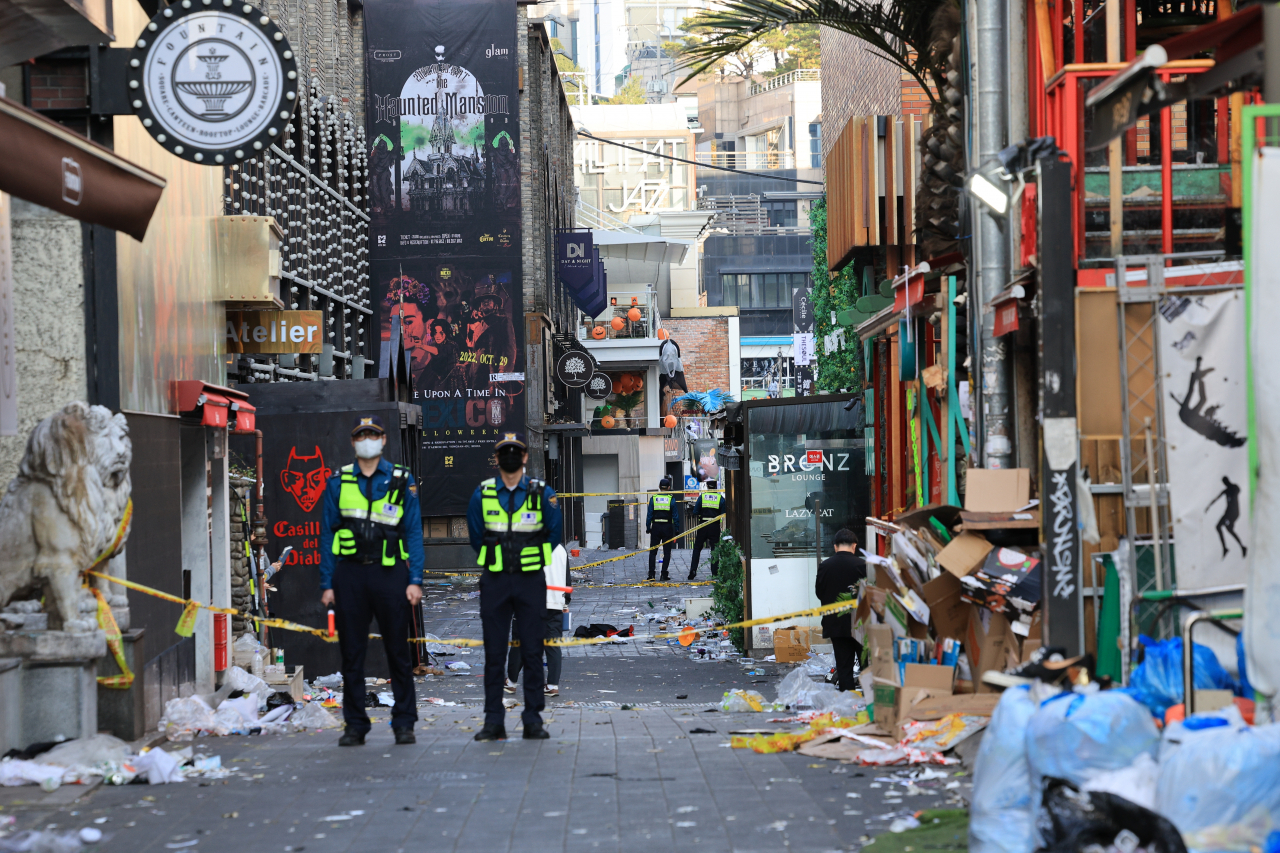Of the 154 fatalities from last weekend’s Halloween crowd crush in Itaewon, nearly two thirds were women. As of Monday, a total of 98 women are confirmed to have been killed in the deadly human stampede, compared to 56 men.
The significant gender gap has led many to wonder why the accident proved to be much more fatal to women than men.
The gender ratio of the crowd at the time of the deadly crush remains unclear, but some medical experts say those with smaller body frames and less physical strength are more vulnerable to injury in a crowd surge situation.
As breathing requires a constant movement of respiratory muscles and the diaphragm, those who are physically weaker could fall victim when everyone trapped fights for their own survival.
 |
This photo on Sunday shows the streets of Itaewon-dong, central Seoul, after the deadly crowd crush that claimed lives of 154. (Yonhap) |
“The strength to resist pressure for women is generally weaker than men, along with the ability to be resuscitated, so that may have been why there were more female victims,” said Park Jae-Sung, professor of fire and disaster prevention at Soongsil Cyber University.
According to the National Health Institute Service, the average Korean man is 170.6 centimeters tall and weighs 72.7 kilograms, while the average Korean women is 157.1 centimeters tall and weighs 57.8 kilograms.
Kim Won-young, a professor of emergency medicine at Asan Medical Center, said that people instinctively cross their arms to make breathing room when their chest region is under pressure -- something that would be harder to do for weaker people in a crowd.
G. Keith Still, a professor of crowd science at the University of Suffolk in southern England, told the New York Times that generally women have smaller frames than men but have more body mass in their upper chest. “If there is pressure exerted there, there is more mass pushing inward, being more detrimental for women,” he said.
Still also noted that men having more upper body strength would factor in when “literally clawing their way out of the situation.”
Eyewitnesses and testimonies of the survivors show that some men were able to escape the scene into adjacent stores, while women were unable to do so.
Hong Ki-jeong, a professor of emergency medicine at Seoul National University Hospital who took part in rescue operations, said most deaths appear to have been caused by the asphyxia-induced cardiac arrest. Simply put, people were suffocated to death, crushed so tightly that they could not breath.
“When (the rescue workers) went to the rescue, most (victims) were unresponsive to CPR, having suffocated to death,” he told local media. “Many must have already suffered brain damage due to asphyxia, so the emergency measures had limited effects.”
The golden hour for cardiac arrest is within the first five minutes, after which brain damage occurs. After 10 minutes, the damage becomes permanent. In case of the Itaewon disaster, such critical time had already passed for most victims as it took several minutes to pull them out of the pile of bodies.







